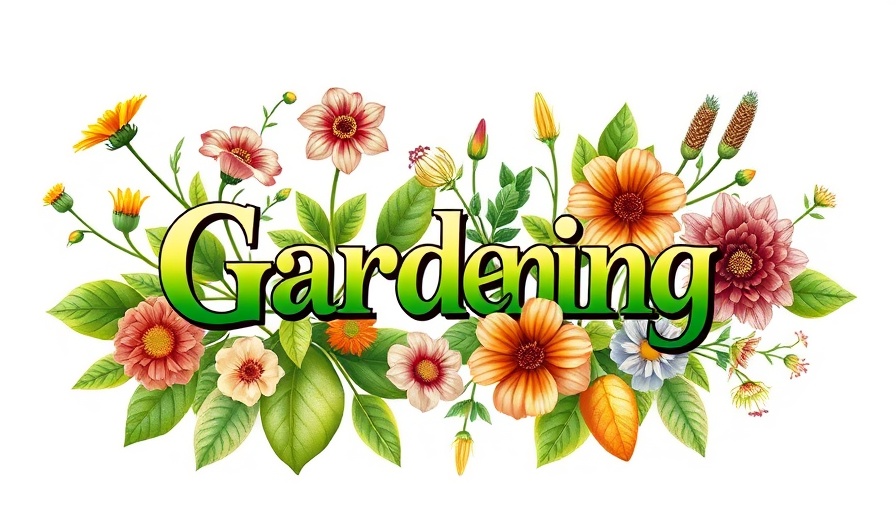
The Perfect Time: When to Harvest Banana Peppers
If you've planted banana peppers in your garden or containers, timing is everything when it comes to harvesting. With various types of banana peppers available—each offering distinct flavors and culinary uses—knowing when to pick them can significantly enhance your overall yield and the quality of your produce. Here’s a guide on how to determine when your banana peppers are ripe for the picking.
Understanding the Lifecycle of Banana Peppers
Banana peppers are not only easy to grow, but they also bring a splash of color and flavor to any dish. Typically tropical plants, they require a warm climate to thrive. Starting seeds indoors requires careful planning—about 70-80 days before you expect to harvest, especially if you’re beginning from seed. By monitoring growth, from seedlings to first blooms to ripe fruit, you will gain a deeper appreciation for the cultivation process.
Key Indicators: How to Tell When Banana Peppers Are Ready
When it comes to determining the ripeness of your banana peppers, several clues can guide you:
- Days to Maturity: Generally, banana peppers take around 70-80 days to reach their mature stage, but this duration varies by variety. Keeping a calendar helps you track this crucial timeline.
- Fruit Size: Most mature banana peppers fall within a size range of five to eight inches. If you’re unsure about whether to harvest a specific pepper, measure it regularly. When growth stagnates, that’s your cue.
- Color Changes: The transformation from pale green to vibrant yellow—or even an orange-red hue—indicates ripeness. The sweet variety is best when bright yellow, while hot banana peppers achieve full heat only when their color is fully developed.
- Texture and Firmness: Ripe banana peppers should feel firm with smooth, glossy skin. Any signs of wrinkling or a squishy texture are indicators that the pepper has overripe.
- Taste and Aroma: The flavor profile of ripe banana peppers is sweet and tangy, and they should emit a pleasant aroma. Hot varieties will offer a nuanced sweetness with heat.
The Benefits of Knowing When to Pick
Selecting ripe banana peppers at the right time can enrich your culinary experiences. For instance, if you’re planning to pickle or use them in salads, picking them at the sweet yellow stage is advisable for optimal flavor and crunch. It’s not just about quality; it's about versatility in cooking options.
Future Trends in Home Gardening
As the trend of home gardening continues to rise, particularly among homeowners looking to cultivate their own produce, understanding the intricacies of harvesting time becomes even more critical. Not only do banana peppers offer nutritional benefits, but they also contribute to sustainable living by reducing food miles. With advancements in home gardening techniques and urban gardening becoming popular, aspiring gardeners can leverage resources—from online forums to local gardening clubs—to enhance their growing skills.
Put Your Knowledge to Use: Tips for the Seasoned Gardener
For those seasoned in gardening, the time it takes to perfect your banana pepper harvest is also an opportunity to experiment with different varieties. Explore heirlooms alongside hybrids for diverse flavors. Cultivating banana peppers can be an enjoyable venture if paired with proactive care, such as adequate watering and pest management. The right techniques will help cultivate a bountiful harvest.
With the right knowledge, anyone can enjoy the process of growing banana peppers. Keep track of these valuable indicators for optimal results, making your gardening experience both productive and rewarding.
Conclusion: Harvest Your Way to Culinary Success
By mastering the art of knowing when to pick banana peppers, not only will you maximize your garden yield, but you will also enrich your meals with fresh ingredients. Experiment with this versatile pepper to create a range of dishes that can impress your family and friends. Start today, and enjoy the satisfaction that comes from home gardening!
 Add Row
Add Row  Add
Add 


Write A Comment